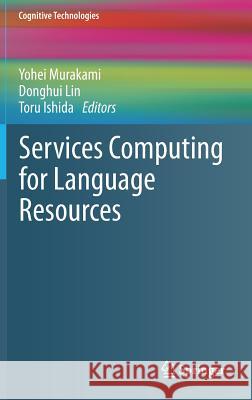Services Computing for Language Resources » książka
topmenu
Services Computing for Language Resources
ISBN-13: 9789811077920 / Angielski / Twarda / 2018 / 225 str.
Kategorie:
Kategorie BISAC:
Wydawca:
Springer
Seria wydawnicza:
Język:
Angielski
ISBN-13:
9789811077920
Rok wydania:
2018
Wydanie:
2018
Numer serii:
000266954
Ilość stron:
225
Waga:
4.79 kg
Wymiary:
23.5 x 15.5
Oprawa:
Twarda
Wolumenów:
01
Dodatkowe informacje:
Wydanie ilustrowane











